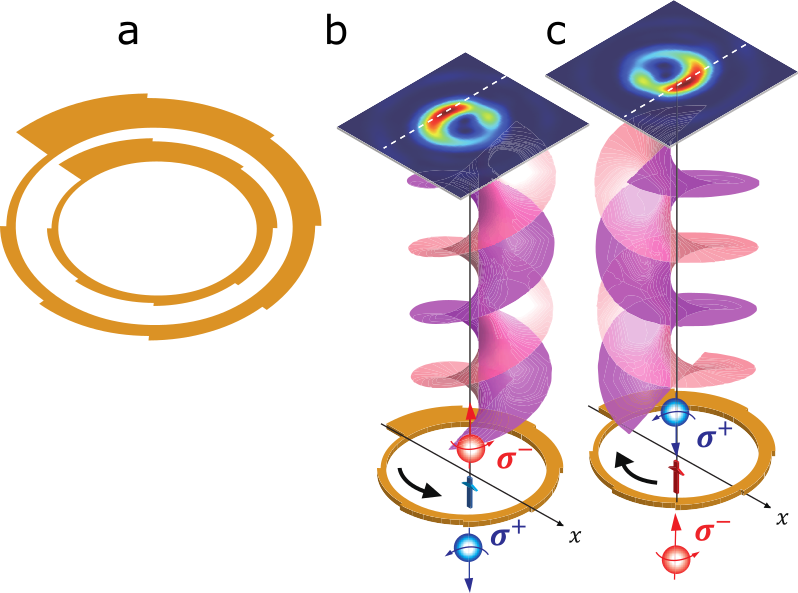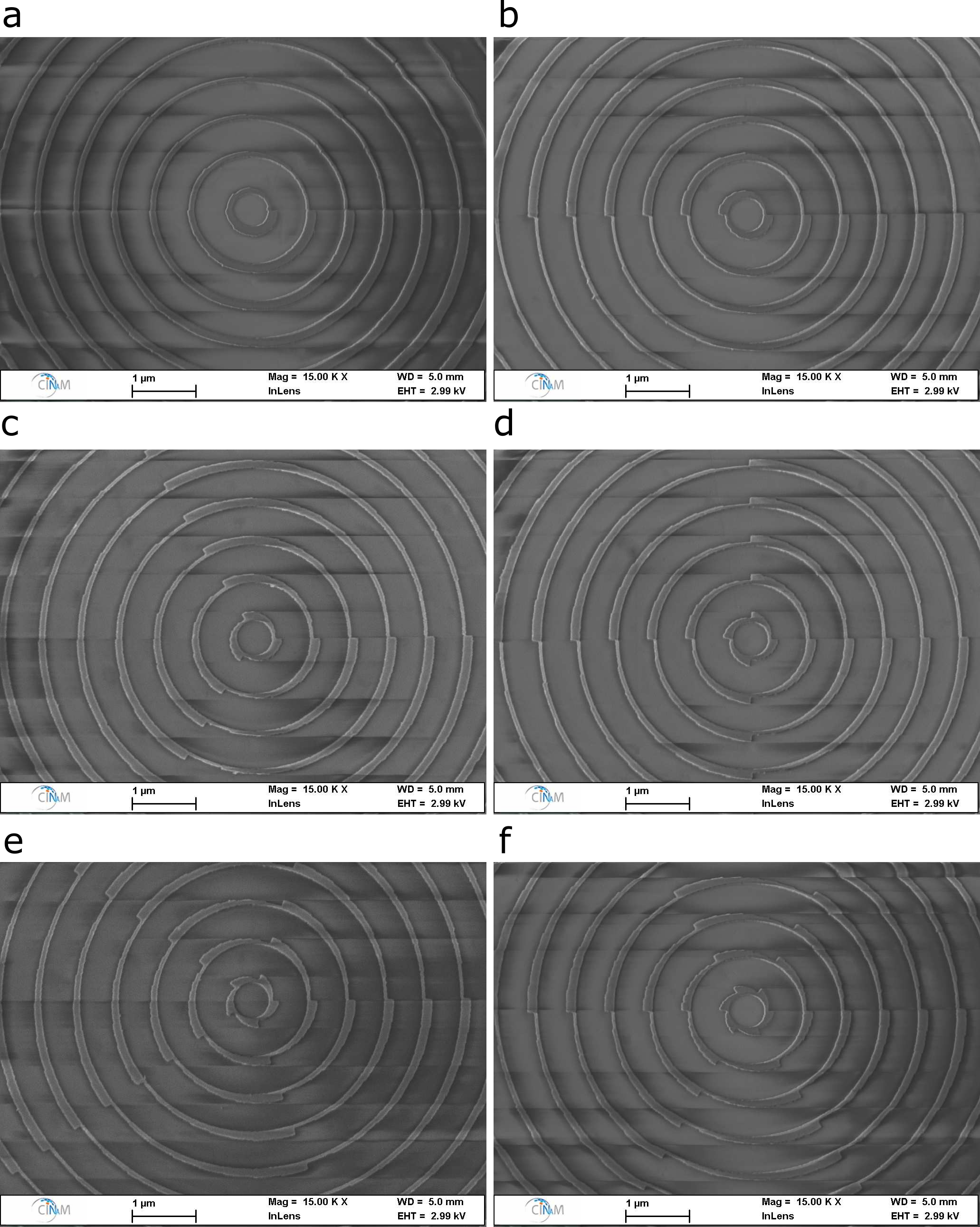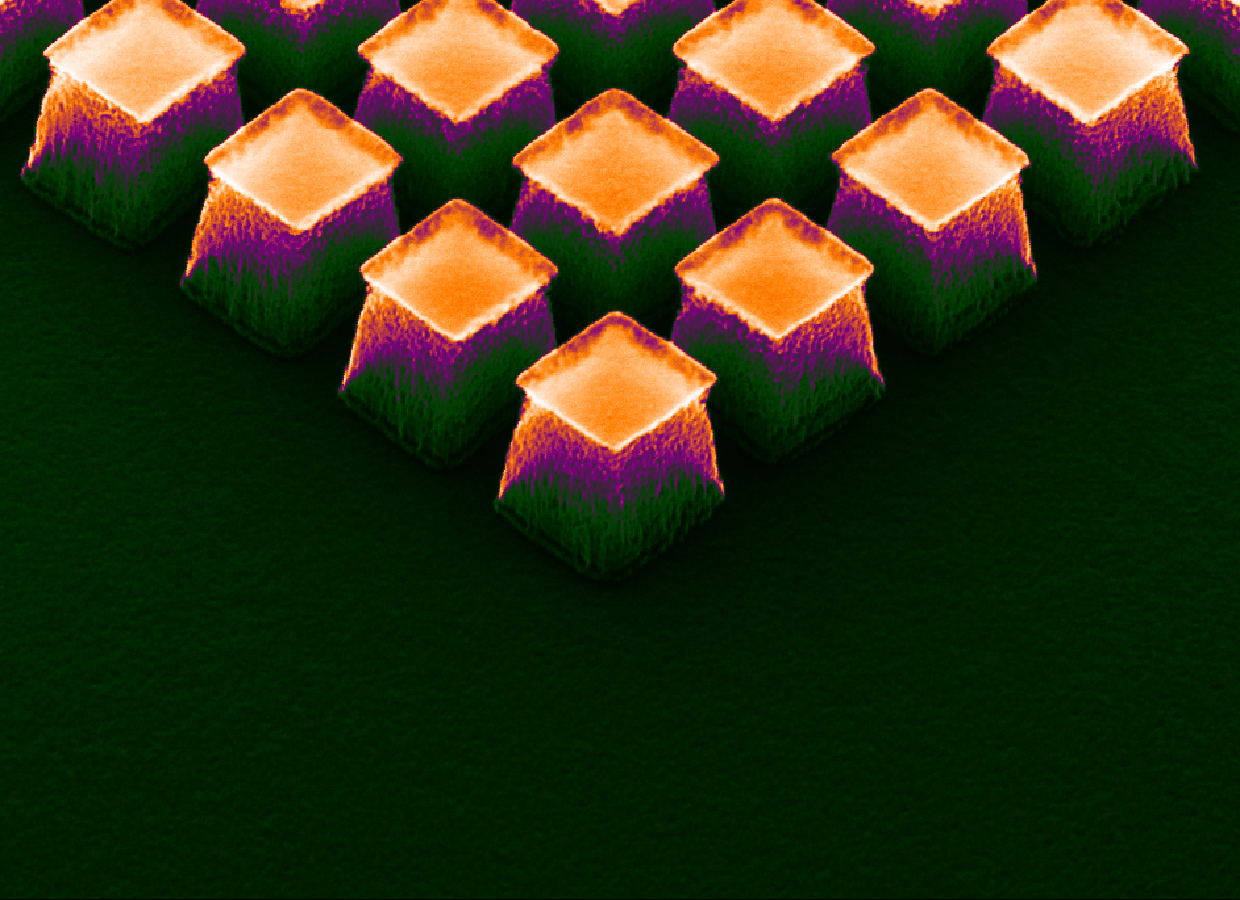Plasmonic metasurfaces of cyclic group symmetry
Researchers and engineers from the Department of Physics at EWHA University (Seoul, Korea) and from CINaM (Aix-Marseille Univ, CNRS) have realized a systematic study of the interaction of vortex light beams with plasmonic metasurfaces of cyclic group symmetry. These results were published in Nanophotonics in June 2020.
A light beam can be described by spin and orbital momenta. The spin state corresponds to the circular polarization, which can be left or right or a mixture of both, while the intrinsic orbital moment describes the vortex states of the wavefront phases. The interaction between spin and orbital momenta of light in metasurfaces allows the control and spatial separation of vortex beams with orbital moments chosen in accordance with the symmetry of the metasurfaces.

The concentric metasurfaces were designed by researchers at EWHA University. Metasurfaces form an ultra-thin optical component whose structuring is made at a sub-wavelength scale. The structures were realized at CINaM, at the Planete micro and nanofabrication platform, by structuring a thin layer of gold deposited on a glass substrate using electron beam lithography.
All the metasurfaces were verified one by one by scanning electron microscope (SEM) observation in order to confirm the successful lithography and lift-off processes. The figure shows the typical SEM images of the central parts of the fabricated C_1h – C_6h symmetry metasurfaces.

The sizes of individual nanofeatures were measured from SEM images taken at a low acceleration voltage (below 3 kV ) in order to decrease sample charging resulting in horizontal lines in the SEM images.
Numerous optical devices use the polarization and orbital momentum of light. The control of the orbital momentum of light is thus at the origin of several very promising applications ranging from optical tweezers to optical communications using vortex beams. The proposed approach offers significant advantages in applications such as miniature communication devices, vortex beam analyzers, chemical and biological sensors. This study also contributes to the fundamental understanding of the interactions between angular moments of light in metasurfaces.
Please read the full text of the article for more details :
Yeon Ui Lee, Igor Ozerov, Frédéric Bedu, Ji Su Kim, Frédéric Fages, Jeon Weon Wu, Optical spin-dependent beam separation in cyclic group symmetric metasurface. Nanophotonics, 2020. ⟨10.1515/nanoph-2020-0160⟩


